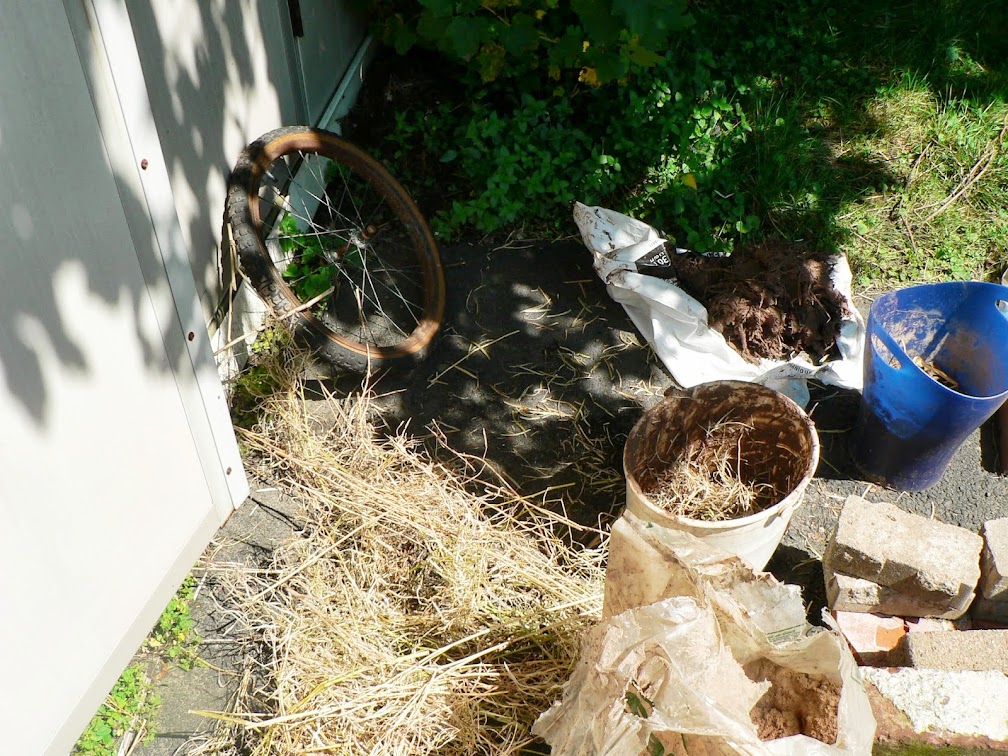Portable Cob thermal mass mosaic
Aug. 11th, 2013 12:21 amThis is a project I've been meaning to do for some time. I hope to give these away as (quazi-gag) gifts or perhaps sell them legitimately. A bicycle wheel is repurposed to be portable thermal mass, that you can place beneath a sunny window to store and release those warm rays on wintery days.

I'd had some cob saved from a project two years ago. All I had to do was just add water. The clay came from the Bay of Fundy mud, I'd bought some sharp masonry sand and used for straw some empty kale seedpods left over from harvesting kale seeds for Annapolis Seeds . I used 50% clay, 22% sand and 30% parts straw, if you assume the mud was 100% clay, though it did contain some silt.


I've put the mass in a bag for now to keep it moist so I can press in some mosaic tiles and give it further polishing. Though it's only a 20" wheel it is incredibly heavy, which is a good sign though it will be lighter when it dries out.
I'd had some cob saved from a project two years ago. All I had to do was just add water. The clay came from the Bay of Fundy mud, I'd bought some sharp masonry sand and used for straw some empty kale seedpods left over from harvesting kale seeds for Annapolis Seeds . I used 50% clay, 22% sand and 30% parts straw, if you assume the mud was 100% clay, though it did contain some silt.
I've put the mass in a bag for now to keep it moist so I can press in some mosaic tiles and give it further polishing. Though it's only a 20" wheel it is incredibly heavy, which is a good sign though it will be lighter when it dries out.